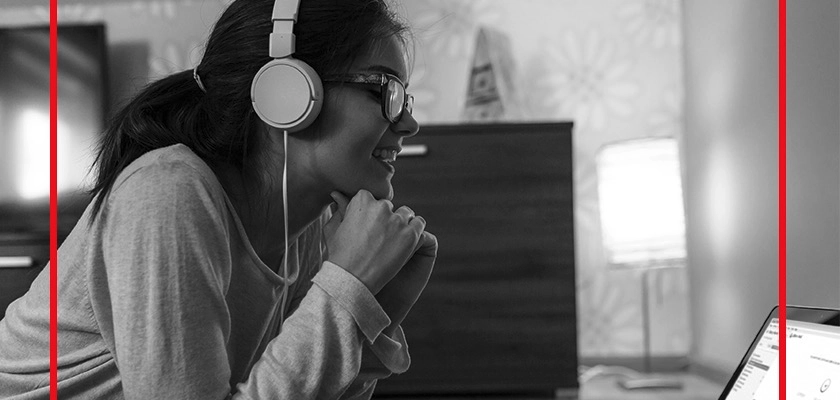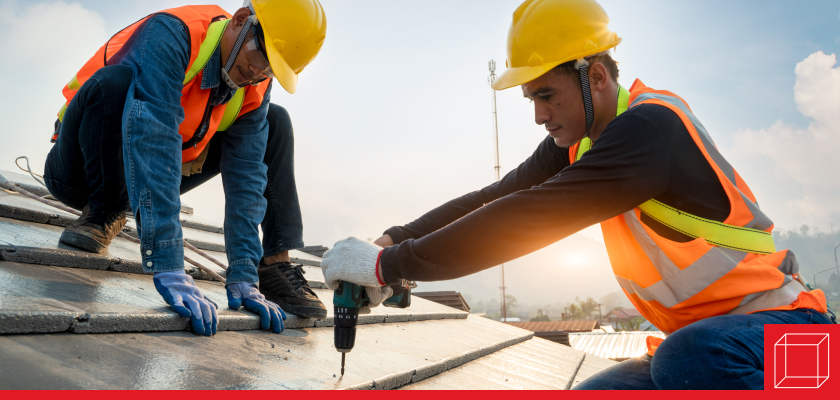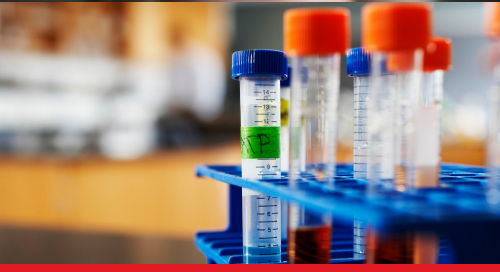"Pandemics and Privilege" - David Newman Ph.D. | October 2020
Adjusting to a global pandemic takes a toll on everyone, but some communities are impacted at higher rates, more drastically than others.
Colgate University
Author of Identities and Inequalities, McGraw Hill

It’s a bit dicey to write a piece about the coronavirus pandemic when its plot is far from over. As I sit here, the full when-all-is-said-and-done toll of the physical, emotional, social, and economic devastation still has not been calculated. Yet even from its early days in February and March of 2020, one thing has been abundantly clear: this is no ordinary health crisis. And seven months in, the staggering disruption this virus is depositing on people’s lives is already unprecedented.
What is also clear is that the pandemic has provided yet another tragic statement about the dualistic and contradictory nature of the American character. On the one hand, it has served as a vivid reminder of our commonalities. Getting used to seeing person after person walk down the street wearing a mask or casually using the new vocabulary we all now know (“social distancing,” “sheltering in place,” “self-quarantine,” “flattening the curve,” “contactless payment,” “contact tracing,” “COVID hair,” and “PPE”), it’s tempting to conclude that everybody’s in this thing together.
No matter what our social standing, religious proclivities, or political affiliation, every one of us has been called upon to make major sacrifices to keep ourselves healthy and to stem the tide of the virus (though not everyone has heeded the call). Indeed, in the early days, it appeared as if the virus was going to be an equal opportunity destroyer, brutally crossing racial, ethnic, gender, sexual, and social class boundaries to find its victims. After all, even famous athletes, entertainers, tycoons, and politicians were falling ill.
On the other hand, however through all this mutual misery, the pandemic has exposed the other unmistakable and all-too-predictable darker side of the American landscape: the one marked by inequality, distrust, and suspicion. As one columnist put it, “No description of the coronavirus is more misleading than calling it ‘the great equalizer’” (Reich, 2020, p. 1). For instance, as far back as April, city and state statistics revealed that people of color were contracting the virus and dying from it at disproportionately high rates:
- Although the Navajo Nation has only about 175,000 residents, it had, at one point, more COVID-19 deaths than 13 entire states (Reich, 2020).
- Nursing homes where residents are predominantly Latinx or African American were twice as likely to get hit by the virus than those with predominantly white residents (“The racial divide,” 2020).
- In Illinois, 43% of those who died from the virus were African American, even though they comprised only 15% of the state’s population. In Louisiana, 70% of the people who died were black though only a third of the population was (cited in Eligon, Burch, Searcey, & Oppel, 2020).
- While 13% of all Americans know someone personally who has died of COVID-19, 31% of African Americans do (Goldstein & Guskin, 2020).
Experts cited several reasons for this disparity including a greater likelihood of suffering from health-compromising conditions like diabetes and less access to effective health care.
Another reason for this disparity is the nature of low-paying occupations themselves. Simply working from home was a luxury that not everyone could enjoy. When stay-at-home orders were issued in most states, lower-income workers still had to physically go to their jobs—often using public transportation to do so. While there was evidence that people in the highest-income areas had cut their movement considerably, poorer areas didn’t see a comparable drop. To put it another way, roughly 40% of the poorest two-thirds of workers were able to work from home. For the highest wage earners, it was 71% (Reeves & Rothwell, 2020).
A heightened concern with the increased exposure to infection that this situation created led low-income workers in grocery stores, delivery services, fast food, and other industries to protest in hopes of getting their employers to provide enough compensation or at least protection to lessen the increased health risks (Valentino-DeVries, Lu, & Dance, 2020). In an ironic twist, these workers—heretofore comprising the disrespected marginal and unskilled wing of the labor force—were now being hailed as heroes because they were putting their lives on the line to do the tasks considered essential to the economy and the well-being of those more fortunate.
Poor children, too, have suffered. Teachers at wealthy private schools have the resources to make remote learning as similar as possible to what it looked like before the pandemic. Those at underfunded public schools are only able to videoconference with their students sporadically given their students’ unreliable wireless connectivity. Rather than narrowing class and race gaps in education, the pandemic has only widened them (Goldstein, 2020).
Inequalities were also evident in people’s abilities to adjust their lives to the new reality. For instance, when the Centers for Disease Control and Prevention first recommended that people wear face coverings in public—even homemade ones—to stem the spread of the virus, many people of color expressed fears that wearing scarves or handkerchiefs over their faces could easily exacerbate racial profiling and put Blacks and Latino/as in added danger. As one person put it, “I want to stay alive but I also want to stay alive (quoted in Alfonso, 2020, p. 1).
Even the ability to maintain social distance has not been equally distributed. Low-income people are more likely than wealthier individuals to live in close quarters (tiny jam-packed apartments, RV parks, and the like) where personal space is at a premium. Living in densely-packed conditions—what one journalist called “the perils of proximity”—has not only increased the risk of infection but also increased levels of conflict, tension, and anxiety (DeParle, 2020). Reliance on sometimes crowded public places for the demands of everyday life—buses, laundromats, convenience stores, food banks—has only exacerbated the problem.
When COVID-19 testing was still in dangerously short supply, some prominent celebrities and other wealthy individuals were able to obtain tests even though they exhibited no symptoms and had no known contact with anyone who had tested positive for the virus, as was required by some testing regulations (Twohey, Eder, & Stein, 2020). A highly exclusive gated community in St. Tropez on the French Riviera had its own private testing facility for well-to-do residents. Parties in the Hamptons had their own on-site testing for guests to be tested—and results obtained—before entering.
Twitter and Instagram were filled with images and videos of the rich and famous sheltering in place in spacious mansions, with pools, game rooms, and fully equipped gyms. Those who could afford it were able to escape densely populated cities like New York and Chicago and hunker down in secluded vacation homes or island villas. The billionaire David Geffen provoked public outrage when he posted photos on Instagram showing him “quarantined” on his $590 million superyachts in the Caribbean.
All this came precisely at a time when millions of people were crammed in tiny apartments, unable to pay their rent because they’d been laid off. Even the $2 trillion stimulus package—the Coronavirus Aid, Relief, and. Economic Security Act—which was meant to provide most citizens with a bit of financial relief contained lucrative tax breaks for wealthy individuals and corporations (Ward, 2020).
It didn’t take long for people to turn on one another either. Historically, in the wake of some national catastrophe (like 9/11) there seems to be a desire to look for someone—or a group of someones—to blame. It wasn’t enough that the “enemy” in this case was a microscopic virus. Many people wanted a villain to hold responsible…and even hate.
So early on, when the message emerging from some social commentators and political leaders was that the pandemic was caused by a “Chinese virus,” anti-Chinese—indeed, anti-Asian—sentiment quickly bubbled to the surface. At a time when the number of confirmed cases worldwide only numbered in the hundreds of thousands, attacks against Asians had already begun to grow.
People reported being spit on, screamed at, and even physically attacked (Tavernise & Oppel, 2020). A Texas teenager stabbed three Asian Americans—including a two-year-old girl—at a department store because “he thought the family was Chinese and infecting people with the coronavirus” (Melendez, 2020, p. 1). As one public health worker put it, “We’re still more worried about someone looking Asian coughing into our shirt than about understanding best practices to stop the spread” (quoted in Torres, 2020, p. 1). The director of the FBI even expressed concern over an increase in hate crimes targeting Asian Americans.
It remains to be seen how all this will play out. The virus has already destabilized just about every aspect of social life that we’ve heretofore taken for granted. But such destabilization does not look or feel the same from group to group. In truth, there are two pandemics—one for the privileged and one for everyone else. Stay tuned…
Questions for Discussion
- Why do you suppose we have such a powerful urge--both as individuals and as a nation--to blame an identifiable “enemy” when horrible things happen?
- Given the dramatic race and class imbalances in the COVID-19 experience, do you think good health and access to adequate health care should be a human right available to everyone or a privilege available only to those who have the necessary financial means?
- We’ve all seen how attempts to impose everyday limitations (e.g., mandatory public mask policies) have been met with some fierce opposition from people who believe they have the constitutional right to make their own decisions on such matters. So how do we balance our cultural commitment to individual liberties with collective community health needs that will require some behavioral restrictions?
References
Alfonso, F. 2020. Why some people of color say they won’t wear homemade masks. CNN. April 7. https://www.cnn.com/2020/04/07/us/face-masks-ethnicity-coronavirus-cdc-trnd/index.html . Accessed April 8, 2020.
DeParle, J. 2020. Proximity imperils poor Americans who can’t afford to keep 6 feet of distance. The New York Times. April 13.
Eligon, J., Burch, A.D.S., Searcey, D., & Oppel, R. A. 2020. Black Americans bear the brunt as virus spreads. The New York Times. April 8.
Goldstein, A., & Guskin, E. 2020. Almost one-third of black Americans know someone who has died of COVID-19, survey shows. Washington Post. June 26.
Goldstein, D. 2020. 2 schools, private and public, illustrate the gap in remote learning. The New York Times. May 10.
Melendez, P. 2020. Stabbing of Asian American 2-year-old and her family was a virus-fueled hate crime: Feds. The Daily Beast. March 31. www.thedailybeast.com/stabbing-of-asian-american-2-year-old-and-her-family-was-a-coronavirus-fueled-hate-crime-feds-say. Accessed April 8, 2020.
The racial divide of nursing home outbreaks. 2020. The New York Times. May 22.
Reeves, R. V., & Rothwell, J. 2020. Class and COVID: How the less affluent face double risks. Brookings. March 27. www.brookings.edu/blog/up-front/2020/03/27/class-and-covid-how-the-less-affluent-face-double-risks. Accessed April 13, 2020.
Reich, R. 2020. A tale of two pandemics. Reader Supported News. May 22. readersupportednews.org/opinion2/277-75/63061-focus-a-tale-of-two-pandemics. Accessed May 22, 2020.
Tavernise, S., Oppel, R. A. 2020. Spit on, yelled at, attacked: Chinese in U.S. fear for safety. The New York Times. March 24.
Torres. E. 2020. Backlash against Asians could hinder efforts to confront coronavirus, experts say. ABC News. abcnews.go.com/US/backlash-asians-hinder-efforts-coronavirus-expert/story?id=69556008. Accessed April 2, 2020.
Twohey, M., Eder, S., Stein, M. 2020. At the front of the test line: A lot of A-listers. The New York Times. March 19.
Valentino-DeVries, J., Lu, D., & Dance, G.J.X. 2020. Location data says it all: Staying at home during coronavirus is a luxury. The New York Times. April 3, 2020.
Ward, V. 2020. How the very rich are different in the COVID-19 fight. CNN. April 6. https://www.cnn.com/2020/04/05/opinions/coronavirus-wealthy-false-security-vicky-ward-opinion/index.html. Accessed April 8, 2020.



